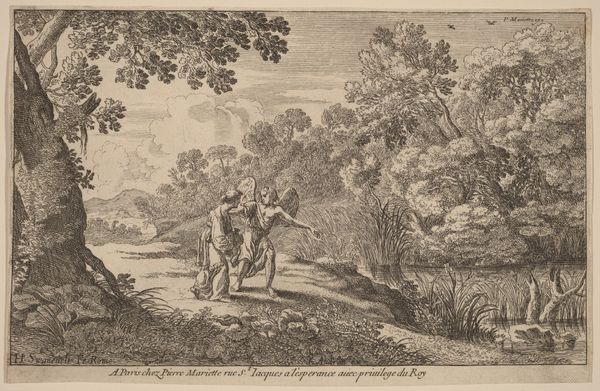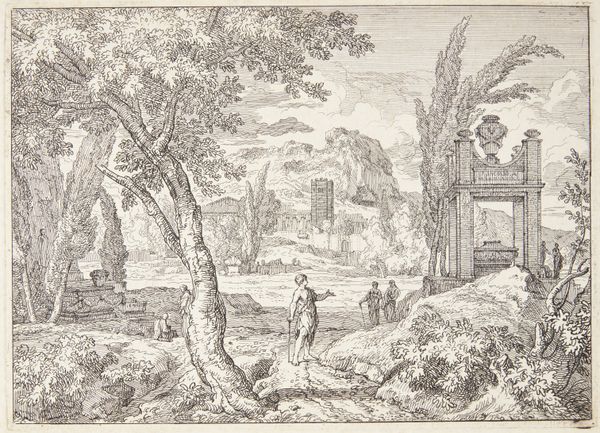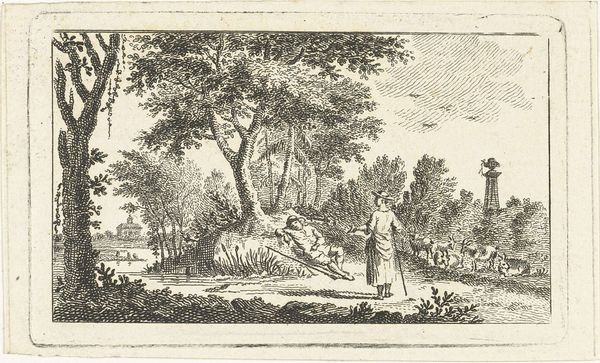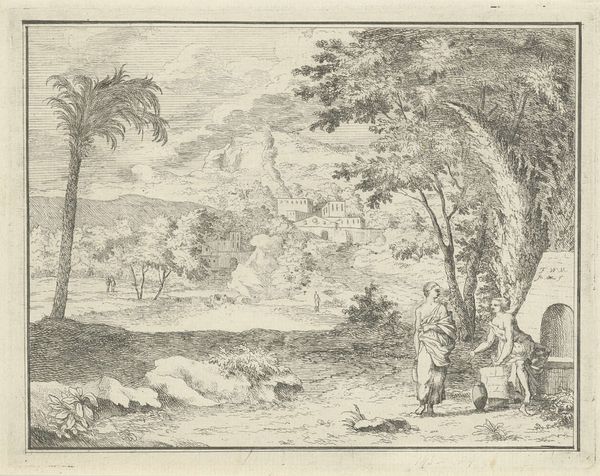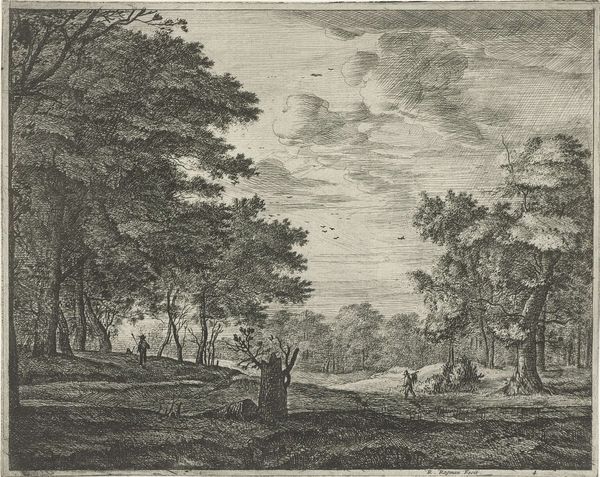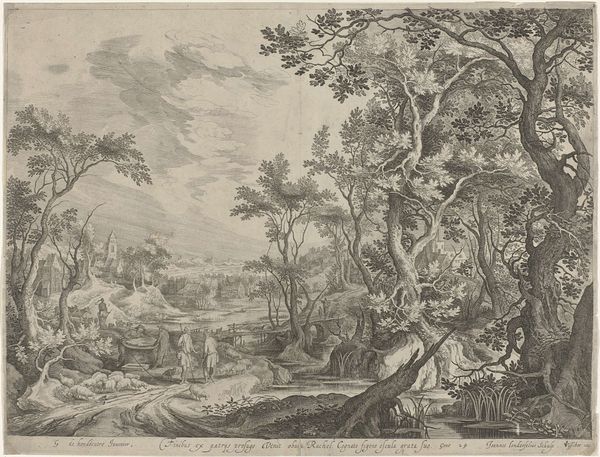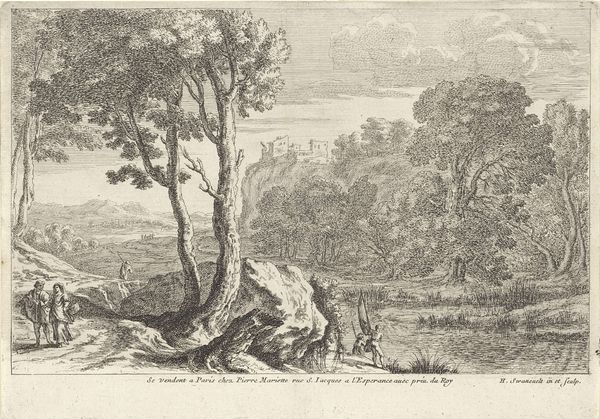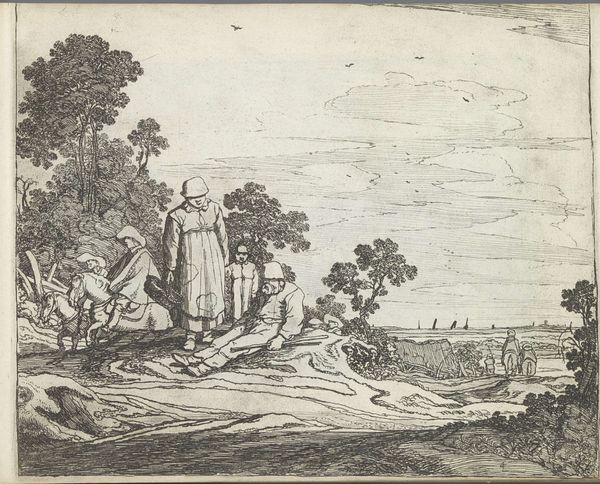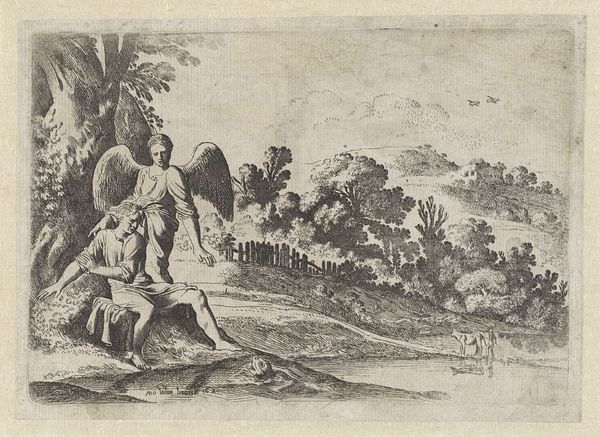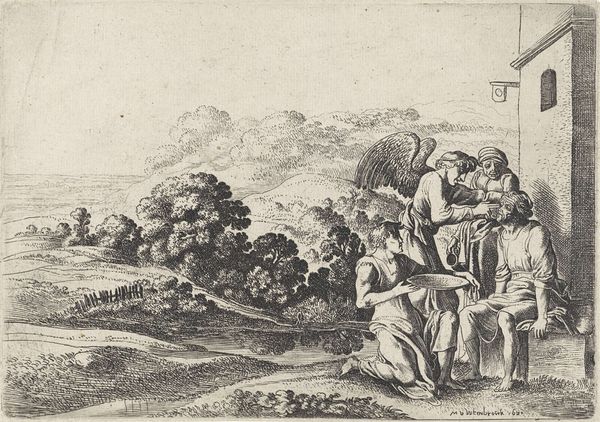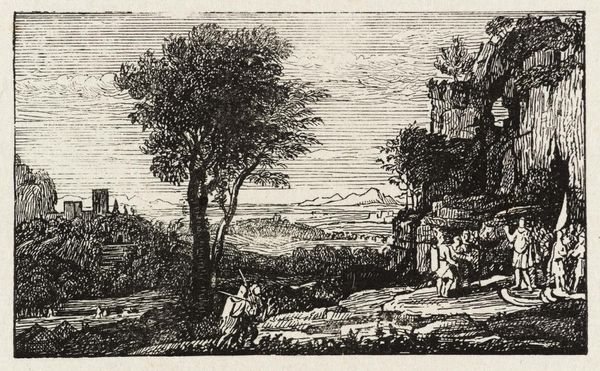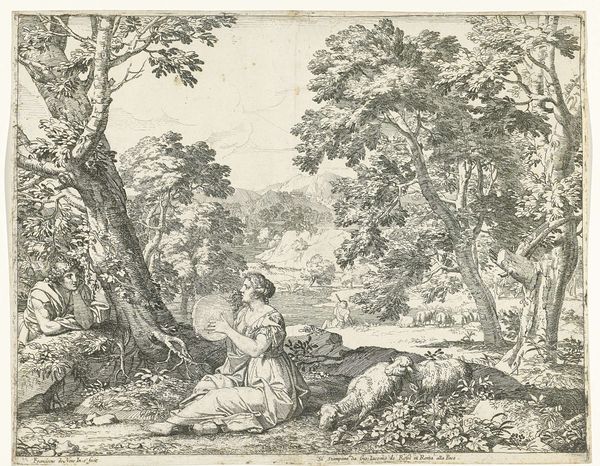
print, etching, engraving
#
baroque
#
dutch-golden-age
# print
#
etching
#
landscape
#
figuration
#
history-painting
#
engraving
Dimensions: height 182 mm, width 259 mm
Copyright: Rijks Museum: Open Domain
Curator: What a wonderfully pastoral depiction of a pivotal moment. This print, made via etching and engraving, is "Samuel Anointing Saul," created by Moyses van Wtenbrouck before 1652. It illustrates the biblical scene of Samuel anointing Saul as the first king of Israel. Editor: There's an unexpected tranquility to it, wouldn't you agree? Even though it represents such a weighty historical and religious turning point, the delicate linework and open composition feel rather serene. The smallness of the figures seems to intentionally downplay their importance relative to the broader context of Dutch society. Curator: It's true, the scale and placement shift our focus. Wtenbrouck’s artistic choices definitely downplay the drama. We see, in essence, a history painting rendered in a landscape format that borrows stylistic techniques from Dutch Golden Age painting, which makes me consider how the format affects meaning-making here. Do the mundane details of landscape make us consider how leaders arise even from seemingly unimportant people in equally unremarkable locations? Editor: Precisely! The quiet backdrop highlights the ordinariness from which power structures arise and within which religious rites unfold. What power does landscape have here? The artist invites us to consider how societal landscapes influence perceptions of authority, the way institutions create authority, and who gets to embody it. Is there even a little anxiety about centralized authority in such a pastoral vision of things? Curator: A compelling perspective. Certainly the burgeoning Republic valued decentralization. And beyond the figures, observe how Wtenbrouck renders light—soft, diffused, creating a sense of depth, particularly around the edges. But the clean edges also emphasize a very sharp class-based contrast. He carefully etches and engraves the sky, figures, and foliage, achieving textural complexity, particularly noticeable in the rendering of leaves. I wonder what those sharp divisions speak to today? Editor: Those choices feel intentional when considering art as cultural and political expression. The art market incentivized genre painting rather than these grand historical scenes. In some ways, it gives the landscape an even more authoritative feel; there is less competing for importance with these more traditional status symbols and forms of wealth display, ultimately leaving more space for exploring alternative narratives related to the rising merchant class and its relation to biblical morality tales. Curator: Well, this print certainly gives us much to consider beyond its surface. Editor: Absolutely, a seemingly simple landscape pregnant with questions about power, class, and history.
Comments
No comments
Be the first to comment and join the conversation on the ultimate creative platform.
